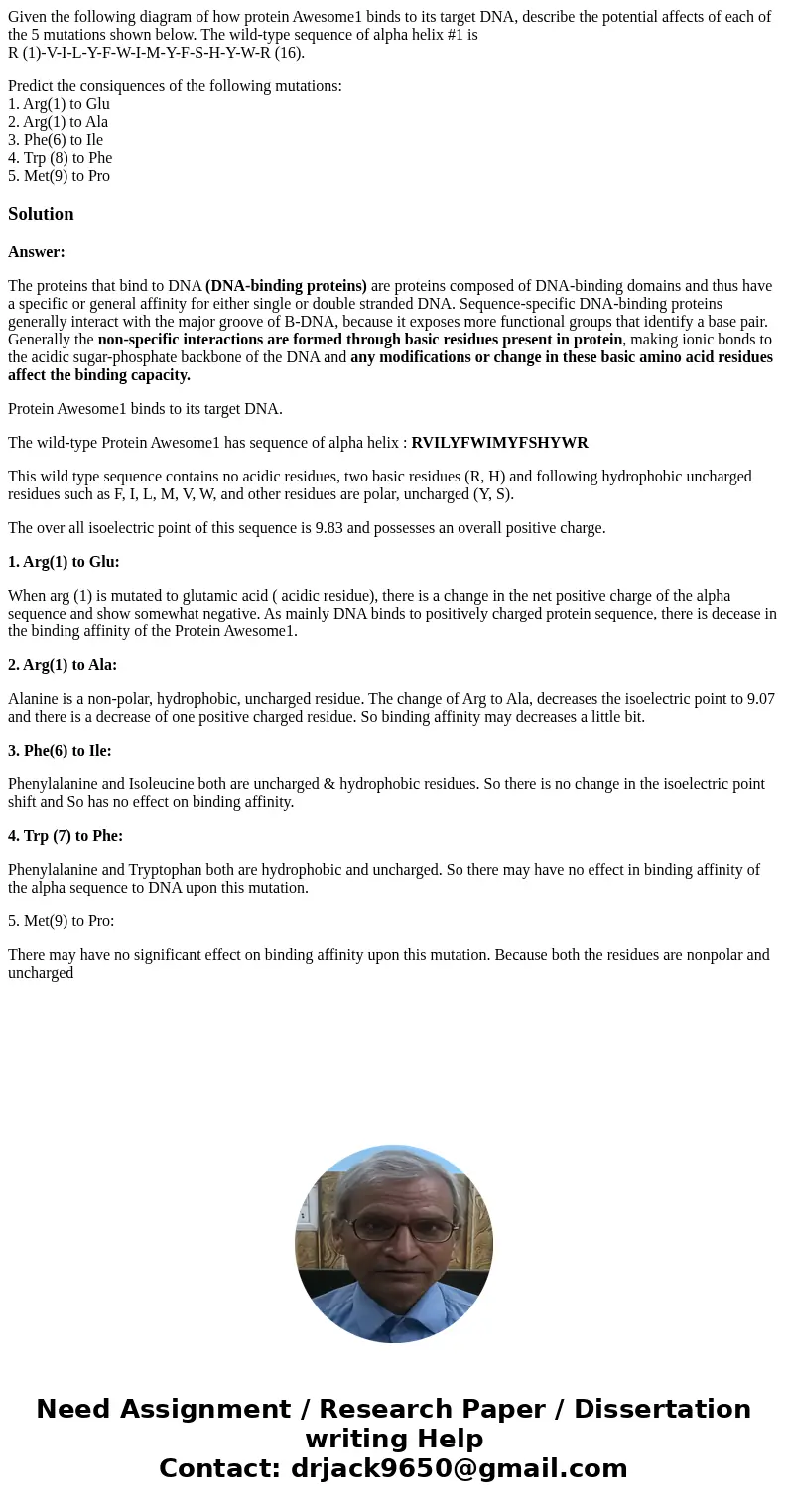Given the following diagram of how protein Awesome1 binds to
Given the following diagram of how protein Awesome1 binds to its target DNA, describe the potential affects of each of the 5 mutations shown below. The wild-type sequence of alpha helix #1 is
R (1)-V-I-L-Y-F-W-I-M-Y-F-S-H-Y-W-R (16).
Predict the consiquences of the following mutations:
1. Arg(1) to Glu
2. Arg(1) to Ala
3. Phe(6) to Ile
4. Trp (8) to Phe
5. Met(9) to Pro
Solution
Answer:
The proteins that bind to DNA (DNA-binding proteins) are proteins composed of DNA-binding domains and thus have a specific or general affinity for either single or double stranded DNA. Sequence-specific DNA-binding proteins generally interact with the major groove of B-DNA, because it exposes more functional groups that identify a base pair. Generally the non-specific interactions are formed through basic residues present in protein, making ionic bonds to the acidic sugar-phosphate backbone of the DNA and any modifications or change in these basic amino acid residues affect the binding capacity.
Protein Awesome1 binds to its target DNA.
The wild-type Protein Awesome1 has sequence of alpha helix : RVILYFWIMYFSHYWR
This wild type sequence contains no acidic residues, two basic residues (R, H) and following hydrophobic uncharged residues such as F, I, L, M, V, W, and other residues are polar, uncharged (Y, S).
The over all isoelectric point of this sequence is 9.83 and possesses an overall positive charge.
1. Arg(1) to Glu:
When arg (1) is mutated to glutamic acid ( acidic residue), there is a change in the net positive charge of the alpha sequence and show somewhat negative. As mainly DNA binds to positively charged protein sequence, there is decease in the binding affinity of the Protein Awesome1.
2. Arg(1) to Ala:
Alanine is a non-polar, hydrophobic, uncharged residue. The change of Arg to Ala, decreases the isoelectric point to 9.07 and there is a decrease of one positive charged residue. So binding affinity may decreases a little bit.
3. Phe(6) to Ile:
Phenylalanine and Isoleucine both are uncharged & hydrophobic residues. So there is no change in the isoelectric point shift and So has no effect on binding affinity.
4. Trp (7) to Phe:
Phenylalanine and Tryptophan both are hydrophobic and uncharged. So there may have no effect in binding affinity of the alpha sequence to DNA upon this mutation.
5. Met(9) to Pro:
There may have no significant effect on binding affinity upon this mutation. Because both the residues are nonpolar and uncharged

 Homework Sourse
Homework Sourse